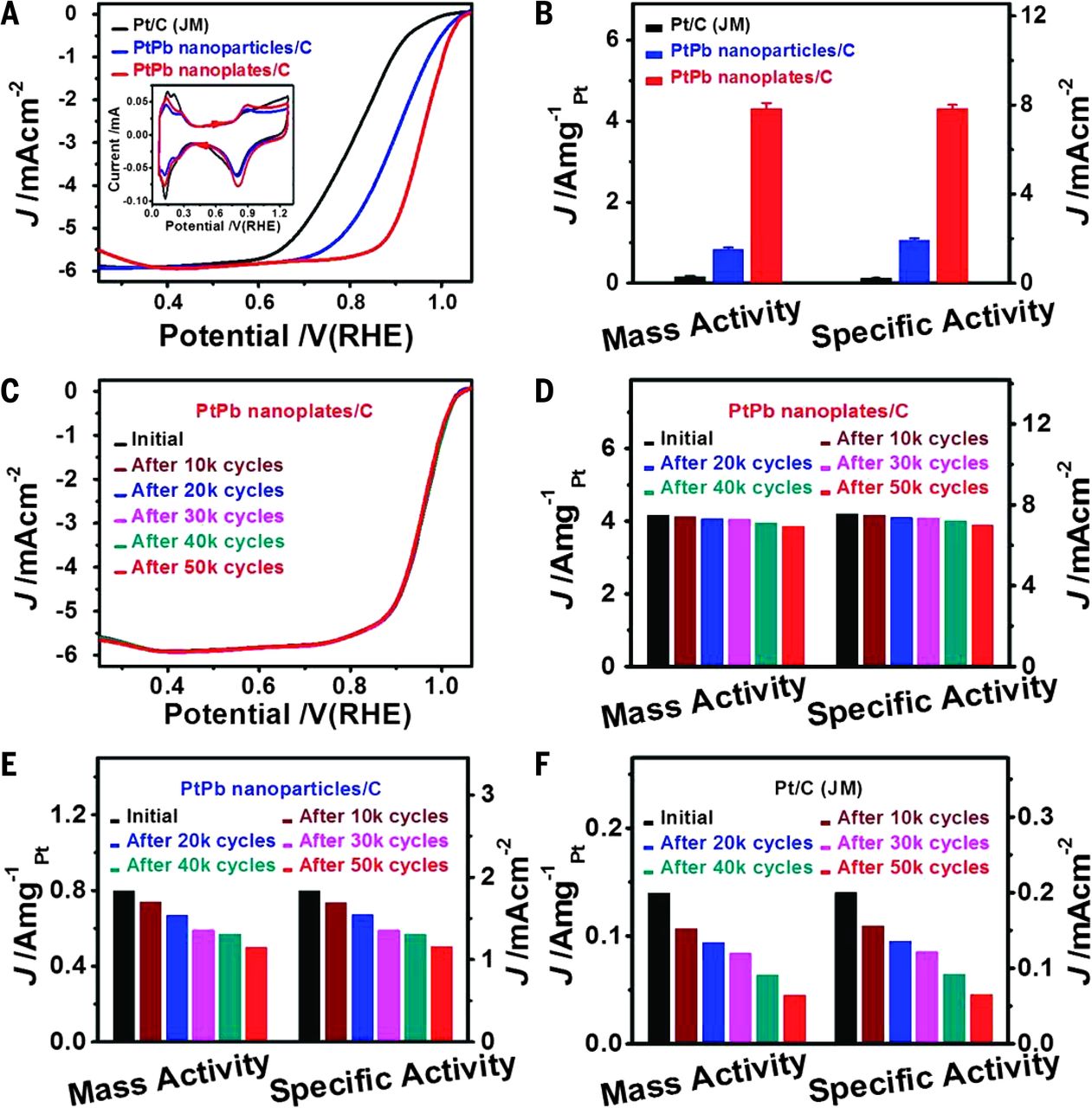About
News and Events
Beamlines
- User Facilities
- Beamlines Directory
- BL08U1-A
- BL08U1-B
- BL09U
- BL13W1
- BL14W1
- BL14B1
- BL15U1
- BL16B1
- BL17U1
- BL01B1
- BL17B1
- BL18U1
- BL19U1
- BL19U2
Technology
- Accelerator Physics
- Accelerator Operations
- Radio Frequency
- Beam Instrumentation
- Control Systems
- Electronics & Detector
- Mechanical Engineering
- Vacuum
- Magnets
- Magnet Power Supplies
- Pulse Technique
- Cryogenics
- Front Ends
- Optics
User Information
Science and Publications
Biaxially Strained PtPb/Pt Core/shell Nanoplate Boosts Oxygen Reduction Catalysis
21-12-2016
Compressive surface strains have been necessary to boost oxygen reduction reaction (ORR) activity in core/shell M/platinum (Pt) catalysts (where M can be nickel, cobalt, or iron). We report on a class of platinum-lead/platinum (PtPb/Pt) core/shell nanoplate catalysts that exhibit large biaxial strains. The stable Pt (110) facets of the nanoplates have high ORR specific and mass activities that reach 7.8 milliampere (mA) per centimeter squared and 4.3 ampere per milligram of platinum at 0.9 volts versus the reversible hydrogen electrode (RHE), respectively. Density functional theory calculations reveal that the edge-Pt and top (bottom)–Pt (110) facets undergo large tensile strains that help optimize the Pt-O bond strength. The intermetallic core and uniform four layers of Pt shell of the PtPb/Pt nanoplates appear to underlie the high endurance of these catalysts, which can undergo 50,000 voltage cycles with negligible activity decay and no apparent structure and composition changes. XAFS measurements were performed at the BL14W1 in Shanghai Synchrotron Radiation Facility (SSRF).

Electrocatalytic performance of PtPb nanoplates/C, PtPb nanoparticles/C, and commercial Pt/C catalysts for ORR.
Links: DOI: 10.1126/science.aah6133


 Copyright©2006.12 Shanghai Advanced Research Institute.
Copyright©2006.12 Shanghai Advanced Research Institute.